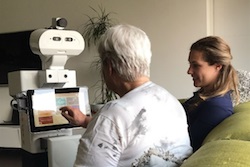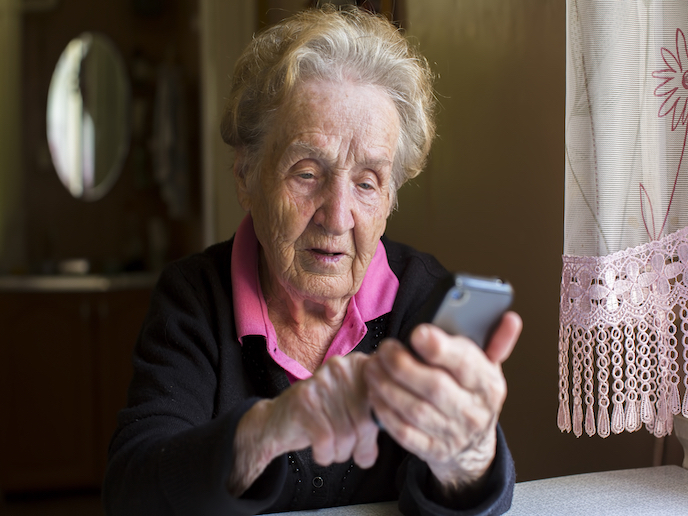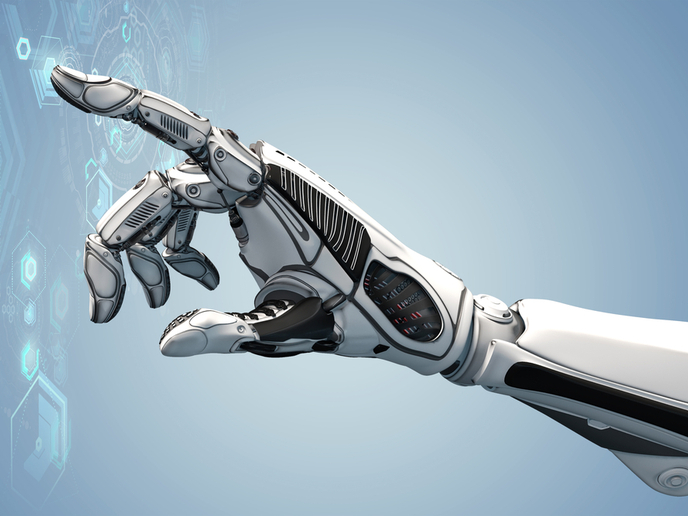A fundamental change in the delivery of robust, reliable and sustainable healthcare in the home
Fewer and fewer people at work, along with increasing numbers of individuals in need of care, combined with the limited availability of care professionals – all these factors demand the development and implementation of new, indispensable solutions to alleviate the pressure on care givers. These new solutions must also be cost-effective – which makes the use of robots to assist the older people living in the community of particular interest. The EU-supported ENRICHME project set out to provide a basis for fundamental change in the delivery of robust, reliable and sustainable healthcare in the home, through novel academic advances. Robots offer a route to independent living The ENRICHME system consists of an interactive, mobile robot capable of moving autonomously in an elderly person’s house. “This can periodically and discretely monitor the person’s activities and some of their physiological parameters,” explains lead researcher Dr Roberto Rosso. The robot is in constant communication with a smart-home system comprising RFID-tagged objects and various sensors in strategic points of the environment. Although several multi-sensor solutions exist for human tracking and dynamic pose estimation, much work remains to be done on the long-term representation and semantic interpretation of human motion for activity recognition. In particular, previous approaches have mostly been based on numerical representations of human (and robot) motion behaviours, although their qualitative description is often the only necessary information for activity recognition. New advances enabling greater interpretative accuracy ENRICHME worked in the field of semantic interpretations of complex and long-term human motion behaviours, based on recent advances in qualitative representations for robotics, in particular, by exploiting multi-sensor (i.e. laser and RGB-D) solutions for people tracking and 3D pose estimation. Novel qualitative models of human activities were developed to monitor long-term motion behaviours of people in domestic environments. “Such representations,” says Dr Rosso, “can allow for a rich, yet compact, description of complex trajectories characterising much human motion, like walking between different places or executing physical exercises. They can also enable the recognition of long-term human activities.” Learning to recognise ‘your’ human, even as they change over time Human recognition is also an essential requisite for social robots, which have to provide user-oriented services and establish long-lasting relationships with their owners. The current research addresses in particular the problem of identity verification with mobile service robots, which is robust in the face of changes over time. Extending previous work in this area, which exploited the mutual benefit of simultaneous people tracking and recognition, novel algorithms were implemented for long-term human identification, making use of multi-modal recognition techniques (i.e. face, body size and volume) that adapt to typical changes in human appearance over days and weeks. The project also worked on a wide range of interventions to improve cognitive functions through the use of games, exercise and the social interaction fostered by communication with the robot. ENRICHME points out these are all fundamental elements for initiating, maintaining and regulating interaction with our ageing population. “User feedback is that independence of elderly people could be greatly improved through the many functions offered by our systems, such as calendar reminders, activity initiation, management of conditions, management of home, maintenance and improvement of cognitive ability,” Dr Rosso adds. ENRICHME found that among the oldest people with multiple cognitive impairments (MCI), there are those who can be potential beneficiaries of interaction with the robot. “The TIAGo robot was real support for elderly people who want to live independently, by making it possible to increase cognitive, physical and social activity as well as by improving nutrition,” Dr Rosso says.
Keywords
ENRICHME, elderly, society, robot, robotics, TIAGo robot, multiple cognitive impairment, care in the community, old age, independence







